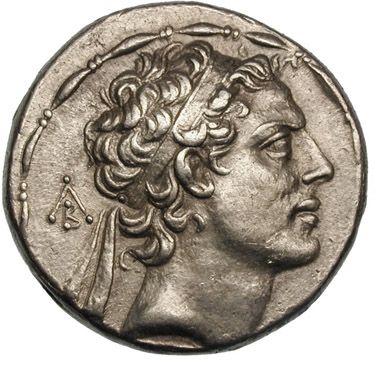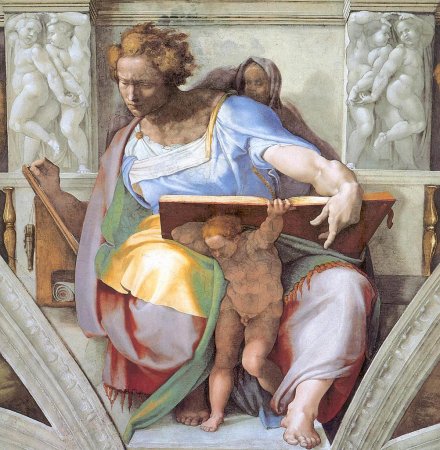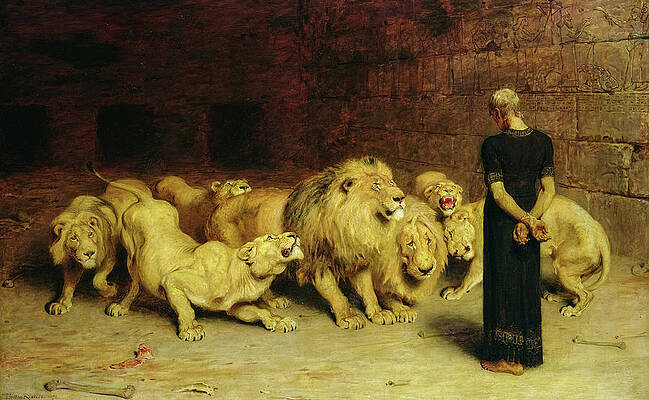 As I write this, we are midway through the celebration of Hanukkah: a Jewish holiday eight nights long (this year, December 11-18). Each night of this festival, observant Jews light another candle on their Hanukkah menorah (these have nine branches, as one holds the light from which the others are lit). A minor festival in the Jewish religious year, the significance of Hanukkah as a family holiday of feasting and gift-giving has grown in parallel to its December neighbor, the Christian celebration of Christmas. This year, both winter holidays are butting up against the necessary restrictions posed by the coronavirus pandemic, forcing Jewish and Christian families to think differently about their celebrations.
As I write this, we are midway through the celebration of Hanukkah: a Jewish holiday eight nights long (this year, December 11-18). Each night of this festival, observant Jews light another candle on their Hanukkah menorah (these have nine branches, as one holds the light from which the others are lit). A minor festival in the Jewish religious year, the significance of Hanukkah as a family holiday of feasting and gift-giving has grown in parallel to its December neighbor, the Christian celebration of Christmas. This year, both winter holidays are butting up against the necessary restrictions posed by the coronavirus pandemic, forcing Jewish and Christian families to think differently about their celebrations.
The story back of Hanukkah is related in Talmud (b. Shabbat 21b) and in the Apocrypha, in 1 Maccabees 4:36-61. Intriguingly, that story is also related, albeit cryptically, in the Old Testament book of Daniel. This may surprise us: the Maccabean revolt, after all, was in the second century BCE, while Daniel is set nearly 400 years earlier, in the time of the Babylonian exile. However, most scholars agree that in its final form, Daniel must actually have been written down in the mid-second century: in fact, between 167 and 164 BCE. For example, the writer of Daniel doesn’t know the name of the Judean king under whom the first exile took place–it was Jehoiachin (see 2 Kgs 24:8-17; Ezekiel 1:1-3), not Jehoiakim, as Daniel 1:1-4 claims–and says that the city of Babylon was conquered, not by Cyrus the Persian (see 2 Chron 36:22-23; Ezra 1:1-4; Isaiah 45:1-4), but by an otherwise unknown Darius the Mede (Daniel 5:30–6:3). These statements couldn’t have been made by an eyewitness to the events.
On the other hand, Daniel accurately describes the events of the Greek period, which also set the stage for the events recalled at Hanukkah. In around 332 BCE, most of the known world was conquered by a young Macedonian called Alexander the Great. When Alexander died ten years later, leaving behind no heir, his generals divided the empire among them. For the Jews in Palestine, two of these rulers would prove especially significant. To their south, Egypt was claimed by Ptolemy, while to their north, Seleucus ruled in Syria. Through the following generations, the descendants of these two Greek generals, called the Ptolemies and the Seleucids, squabbled for control of Palestine. As long as the Ptolemies of Egypt were in control, the Jews of Palestine were left alone. However, in 200 BCE Antiochus III, the reigning Seleucid, conquered Palestine. At first, little changed. But when Antiochus IV Epiphanes came to power in 175 BCE, he began to intervene drastically in Jewish life (1 Maccabees 1:20-64; Daniel 7:25; 11:29-39): perhaps as part of a campaign to unify his kingdom under Greek culture and religion, perhaps in order to get his hands on the Jerusalem temple treasury–or perhaps as an act of anti-Semitic hatred.

Antiochus IV appointed a high priest of his own choosing in Jerusalem, and gave his support to those in the Jerusalem aristocracy who favored the new Greek ways. When pious Jews resisted, he used cruder methods. In 167 BCE, an altar to Zeus, chief god of the Greeks, was set up in the Jerusalem temple. On this altar was sacrificed an animal sacred to Zeus: the pig. This terrible sacrilege–the sacrifice of an unclean anmal to an alien god–is the “desolating monstrosity” of Daniel 11:31 (in the KJV, “the abomination that maketh desolate;” see also Matt 24:15; Mark 13:14). Similar altars, and similar sacrifices, were ordered established throughout the land. It became illegal to circumcise male children, to observe the Sabbath or any of the other festivals, to teach or even to read the Law, and those who resisted were horrifically persecuted. The traditional Hanukkah song “Hayo Hayah” (here adapted and set to music by Peter Yarrow, Noel Paul Stookey, and Mary Travers) retells the story.
All of this is accurately (if symbolically) related in Daniel’s vision of the future (Dan 10:1–11:39). But at this point, historical events and the course of the vision no longer coincide. Daniel 11:40-43 predicts steadily greater victories for Antiochus–until suddenly “reports from the east and north will alarm him, and in a great rage he will set off to devastate and destroy many” (Dan 11:44). Then, preparing to return to Syria, Antiochus will camp in Palestine, where the archangel Michael will fall upon him with the heavenly armies and destroy him, ushering in the resurrection of the dead and the end of the world (Dan 12:1-3)–which, of course, did not happen. Antiochus actually died in the course of his campaign against Persia, in 164 BCE. Earlier that same year, Jerusalem was liberated by an army of Jewish guerrillas led by Judas Maccabeus (1 Maccabees 4:36-61). Daniel does not describe these events, likely because the book was written before they happened: sometime between 167 (the date of the “desolating monstrosity”) and 164 BCE.
 So, why the eight nights of Hanukkah, with their eight lights? Following the liberation of Jerusalem, Judas Maccabeus summoned faithful priests to reconsecrate the temple and its altar, defiled by the idolatrous rites that had been performed there under Antiochus’ rule. But, according to the tradition, they hit a snag. Talmud says:
So, why the eight nights of Hanukkah, with their eight lights? Following the liberation of Jerusalem, Judas Maccabeus summoned faithful priests to reconsecrate the temple and its altar, defiled by the idolatrous rites that had been performed there under Antiochus’ rule. But, according to the tradition, they hit a snag. Talmud says:
For when the Greeks entered the Temple, they defiled all the oils therein, and when the Hasmonean dynasty prevailed against and defeated them, they made search and found only one cruse of oil which lay with the seal of the High Priest, but which contained sufficient for one day’s lighting only; yet a miracle was wrought therein and they lit [the lamp] therewith for eight days. The following year these [days] were appointed a Festival with [the recital of] Hallel and thanksgiving [b. Shabbat 21b].

The dreidel game traditionally played during Hanukkah becomes another way of recalling the miracle of the lamps:
Each side of the dreidel bears a letter of the Hebrew alphabet: נ (nun), ג (gimel), ה (hei), ש (shin). These letters are translated in Yiddish to a mnemonic for the rules of a gambling game played with a dreidel: nun stands for the word נישט (nisht, “not”, meaning “nothing”), gimel for גאַנץ (gants, “entire, whole”), hei for האַלב (halb, “half”), and shin for שטעלן אַרײַן (shtel arayn, “put in”). However, according to folk etymology, they represent the Hebrew phrase נֵס גָּדוֹל הָיָה שָׁם (nes gadól hayá sham, “a great miracle happened there”).

While Hanukkah rightly celebrates the military victory of the Maccabees over their Greek oppressors, the book of Daniel models a different path, of passive, peaceful resistance. Although written long after the Babylonian exile, Daniel 1 likely preserves authentic memories from the era of the Babylonian exile. We know from Babylonian records that Jewish exiles did become part of the imperial bureaucracy, so Daniel and his friends being singled out for special training as palace officials (Dan 1:3-7) may reflect a memory of Babylon. The king’s provision of “daily allotments from his own food and from the royal wine” (Dan 1:5) is reminiscent of 2 Kings 25:27-30, where Jehoiachin, after thirty-seven years as a prisoner, was released and permitted to live in the palace, receiving “a regular food allowance” from the king, “every day.” However, the term used for this portion in Daniel is pat-bag (found only here and in Dan 11:26), a loanword from the Persian patibaga, meaning “delicacy”—showing that while this passage may recall experiences in the Babylonian exile, it was written down much later.
Accepting the king’s pat-bag would have meant violating the Jewish dietary laws, since no attempt could have been made to slaughter animals, or to select and prepare dishes, in accordance with those strict requirements (see Lev 11:1-47; 17:1-16; compare Deut 12:20-27; 14:1-21). The palace master was unwilling to let his Jewish charges eat anything other than what the king had provided. But Daniel persuaded their guard to agree to a contest. For ten days, Daniel and his friends would eat only fruits and vegetables (the Hebrew zero’im and zero’nim, found only in Dan 1:12, 16, apparently mean “seed-bearing plants”) and drink only water–a diet that involves no violation of kosher laws. At the end of that time, Daniel invited the guard to “compare our appearance to the appearance of the young men who eat the king’s food. Then deal with your servants according to what you see” (Dan 1:13). Sure enough, Daniel and his friends thrived: “At the end of ten days they looked better and healthier than all the young men who were eating the king’s food” (Dan 1:15). The guard, therefore, was pleased to continue giving them vegetables and water. Without any violence, indeed with scarcely a disturbance, Daniel had won his first victory over his captors, contriving to live for his faith, rather than to die for it!

Perhaps the most famous story in this book is Daniel in the lions’ den (Dan 6:1-28), set in the reign of Darius–evidently the Persian Darius I (522-486 BCE), although according to the Greek historian Herodotus (Hist. 3.89-94), Darius divided his empire into twenty satrapies, not the 120 that the Aramaic text of Daniel 6:1 claims. In form, this story is reminiscent of the book of Esther, also set in the Persian period (in Esther 1:1, Ahasuerus [Xerxes I, 485-465 BCE] is said to rule “from India to Cush—one hundred twenty-seven provinces in all;” note that the Greek text of Daniel 6:1 also counts 127 satrapies). In Esther as in Daniel, a good and just councilor (Mordecai in Esther, Daniel here) is victimized by jealous enemies in the court (Haman in Esther; in Daniel, all the other councilors). In both books, the Persian king is tricked into signing an irrevocable edict: in Esther, ordering the deaths of all the Jewish people; in Daniel, directing that “for thirty days anyone who says prayers to any god or human being except you, Your Majesty, will be thrown into a pit of lions” (Est 3:9-15; Dan 6:8, 12, 15). We should note that “the law of the Medes and Persians, which cannot be annulled” (Dan 6:8, 12) is a bit of folklore, rather than a genuine feature of Persian law. But while in Esther Ahasuerus’ irrevocable command is matched by a new law arming the Jews and empowering them to resist (Est 8:8-13), in Daniel Darius is forced to carry out his edict. Daniel, who had continued his practice of daily prayer in defiance of the law, is hurled into the lions’ den. The story records how, after a sleepless night, King Darius breathlessly ran to the lions’ den, to learn how his friend had fared:
At dawn, at the first sign of light, the king rose and rushed to the lions’ pit. As he approached it, he called out to Daniel, worried: “Daniel, servant of the living God! Was your God—the one you serve so consistently—able to rescue you from the lions?” Then Daniel answered the king: “Long live the king! My God sent his messenger, who shut the lions’ mouths. They haven’t touched me because I was judged innocent before my God. I haven’t done anything wrong to you either, Your Majesty.” The king was thrilled. He commanded that Daniel be brought up out of the pit, and Daniel was lifted out. Not a scratch was found on him, because he trusted in his God (Dan 6:19-23).

Today, the Asiatic lion is extinct, and lions are restricted to a few African regions. But in the ancient times, these fierce predators ranged across the Near East, and were understandably feared and respected–even regarded as symbols of royalty in Israel (for example, Gen 49:9; 1 Kgs 10:18-20//2 Chron 9:17-19; Ezek 19:1-9) and Mesopotamia. Yet for all the vividness of Daniel’s story, we have no evidence from the Persian period of lions as a mode of execution. Daniel Smith-Christopher (“The Book of Daniel: Introduction, Commentary, and Reflections,” in The New Interpreter’s Bible, Vol. VII, ed. Leander Keck [Nashville: Abingdon, 1996], 91) proposes that the lions’ den serves as “a symbol of the exile itself,” and of God’s promise of deliverance to God’s people.

Mahatma Gandhi, who called Daniel “one of the greatest passive resisters that ever lived,” said specifically of the lion’s den story:
When Daniel disregarded the laws of the Medes and Persians which offended his conscience, and meekly suffered the punishment for his disobedience, he offered satyagraha [nonviolent resistance; a term coined by Gandhi] in its purest form.
The book of Daniel models and affirms the passive, nonviolent resistance practiced by its own faithful community: a different way than the path of violent revolution followed by the Maccabean rebels. Today, some Christians regard the COVID-19 restrictions on religious and social gatherings advised by medical professionals as an assault upon their freedom of worship, and call upon the church to resist, like Judas Maccabeus taking up the sword against what they see as an oppressive regime. But I would argue that that model is fundamentally flawed. People of faith are being inconvenienced by these necessary regulations, not persecuted. We may not be able to gather in public, but nothing and no one is restricting our freedom to worship. The faithful response in our day is not the militance of the Maccabees, but the peaceful acquiescence in pursuit of a higher goal modeled by Daniel.
 So–what about the Grinch? What is this inspired invention of Theodore Geisel (aka Dr. Suess) doing in the same blog as Judas Maccabeus and Daniel? In a wonderful Twitter thread, Sandra Tayler sees in this now-classic Christmas story a model of and a lesson for holiday observance in this season of pandemic:
So–what about the Grinch? What is this inspired invention of Theodore Geisel (aka Dr. Suess) doing in the same blog as Judas Maccabeus and Daniel? In a wonderful Twitter thread, Sandra Tayler sees in this now-classic Christmas story a model of and a lesson for holiday observance in this season of pandemic:
This year, more than ever, we need the story of The Grinch Who Stole Christmas where all the trappings are stripped away and Christmas saves the Grinch. . . . Yes the Grinch story does end with the restoration of the traditions and trappings, but it didn’t have to. Christmas would have been fine even if the sled had gone off Mount Crumpit. That was the point. That’s WHY it saved the Grinch.